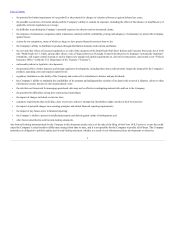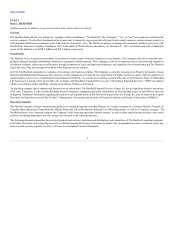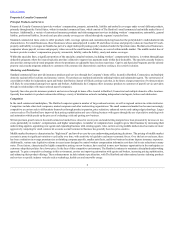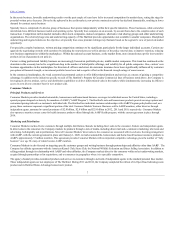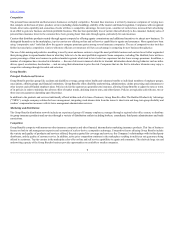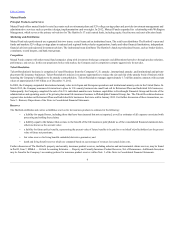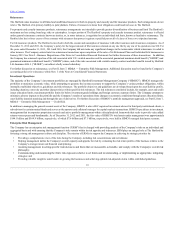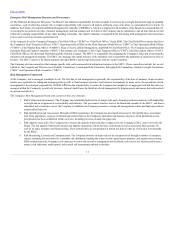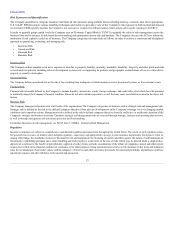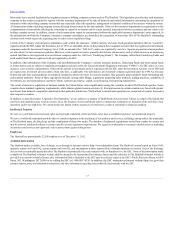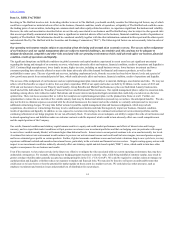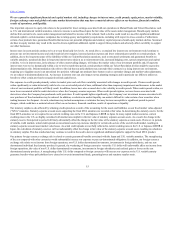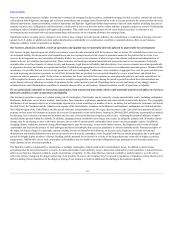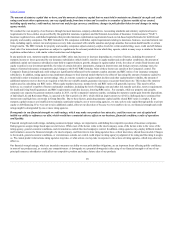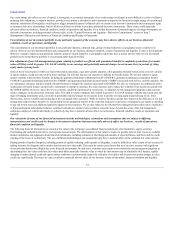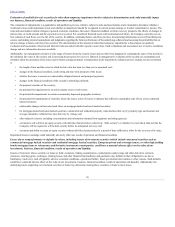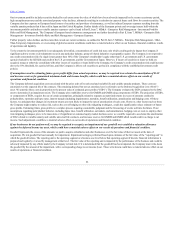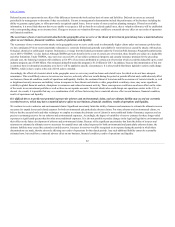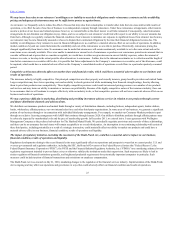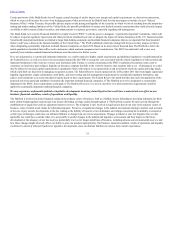The Hartford 2012 Annual Report Download - page 14
Download and view the complete annual report
Please find page 14 of the 2012 The Hartford annual report below. You can navigate through the pages in the report by either clicking on the pages listed below, or by using the keyword search tool below to find specific information within the annual report.
Table of Contents
Investing in The Hartford involves risk. In deciding whether to invest in The Hartford, you should carefully consider the following risk factors, any of which
could have a significant or material adverse effect on the business, financial condition, results of operations, or liquidity of The Hartford and could also cause
the trading price of our securities, including our common stock and other equity-related securities, to experience significant fluctuations and volatility.
However, the risks and uncertainties described below are not the only ones related to our business and The Hartford may also be subject to other general risks
that are not specifically enumerated which may have a significant or material adverse effect on the business, financial condition, results of operations or
liquidity of The Hartford. This information should be considered carefully together with the other information contained in this report and the other reports
and materials filed by The Hartford with the Securities and Exchange Commission (“SEC”). The following risk factors are not necessarily listed in order of
importance.
Our operating environment remains subject to uncertainty about the timing and strength of an economic recovery. The success of the realignment
of our businesses and our capital management plan are subject to material challenges, uncertainties and risks and may not be adequate to
mitigate the financial, competitive and other risks associated with our operating environment, which could adversely affect our business, financial
condition, results of operations and liquidity.
The significant disruptions and difficult conditions in global economies and capital markets experienced in recent years has cast significant uncertainty
regarding the timing and strength of an economic recovery, which may adversely affect our business, financial condition, results of operations and liquidity in
2013. Continued high unemployment, lower family income, higher tax rates, including on small business owners, lower business investment and lower
consumer spending have adversely affected or may in the future adversely affect the demand for financial and insurance products, as well as their
profitability in some cases. The rate of growth and recovery, including employment levels, from the recession has been below historic levels and a period of
slow growth may persist for an extended period of time, which could adversely affect our business, financial condition, results of operations and liquidity.
The success of the realignment of our businesses and our capital management plan remain subject to material challenges, uncertainties and risks. We may not
achieve all of the benefits we expect to derive from our plan to repurchase $500 of our equity and reduce our debt by $1 billion over the course of 2013 and
2014 and our decision to focus on our Property and Casualty, Group Benefits and Mutual Fund businesses, place our Individual Annuity business into
runoff and sell the Individual Life, Woodbury Financial Services and Retirement Plans businesses. Our capital management plan is subject to execution risks,
including, among others, risks related to market fluctuations and investor interest and potential legal constraints that could delay execution at an otherwise
optimal time. There can be no assurance that we will in fact complete our capital management plan over the planned time frame or at all. Further, our
opportunities to reduce the size and risk of the variable annuity book may be limited and initiatives pursued may not achieve the anticipated benefits. We also
may not be able to eliminate expenses associated with the divested businesses in the manner and on the schedule we currently anticipate and we may incur
additional restructuring charges. We may take further actions beyond the capital management plan and business realignment, which may include
acquisitions, divestitures or restructurings that may involve additional uncertainties and risks that negatively impact our business, financial condition,
results of operations and liquidity. In addition, we are exposed to execution risk relating to the continued reinvestment of our investment portfolios and the
continuing refinement of our hedge programs for our run-off annuity block. If our actions are not adequate, our ability to support the scale of our business and
to absorb operating losses and liabilities under our customer contracts could be impaired, which would in turn adversely affect our overall competitiveness
and the capital position of the Company.
Our results, financial condition and statutory capital remain sensitive to equity and credit market performance and effects of interest rates and foreign
currency, and we expect that market conditions will put pressure on returns in our investment portfolios and that our hedging costs (in particular with respect
to our in-force variable annuity blocks) will remain higher than historical levels. Interest rates in recent periods continue to be at or near historically low levels.
A sustained low interest rate environment would continue to pressure our net investment income and could result in lower margins, increased pension expense
and lower estimated gross profits on certain products. Further, if global economic conditions worsen and real estate valuations drop to new cycle lows, we may
experience additional realized and unrealized investment losses, particularly in the real estate and financial services sectors. Negative rating agency actions with
respect to our investments could also indirectly adversely affect our statutory capital and risk-based capital (“RBC”) ratios, which could in turn have other
negative consequences for our business and results.
Even if the measures we have taken (or take in the future) are effective to mitigate the risks associated with our current operating environment, they may have
unintended consequences. For example, rebalancing our hedging program to protect economic value, while being mindful of statutory surplus, may result in
greater earnings volatility under generally accepted accounting principles in the U.S. (“U.S. GAAP”). We could be required to consider actions to manage our
capital position and liquidity or further reduce our exposure to market and financial risks. We may also be forced to sell assets on unfavorable terms that
could cause us to incur losses or lose the potential for market upside on those assets in a market recovery. We could also face other pressures, such as
employee recruitment and retention issues and potential loss of distribution for our products.
14


